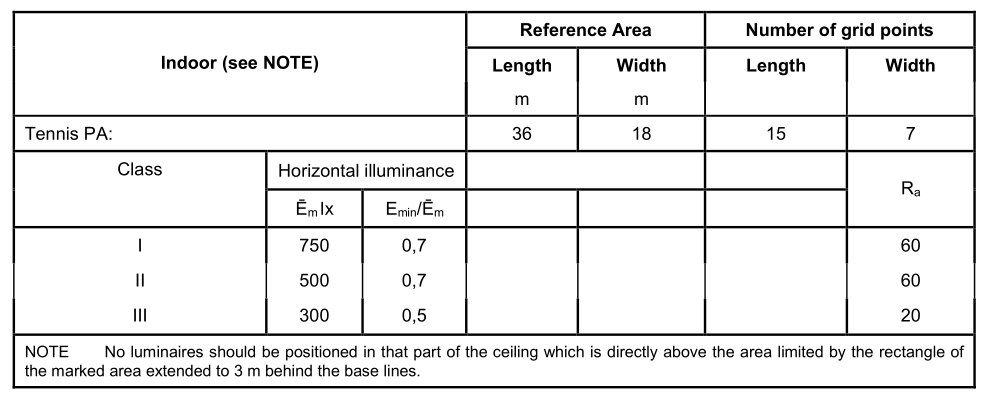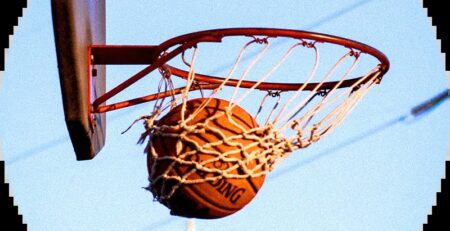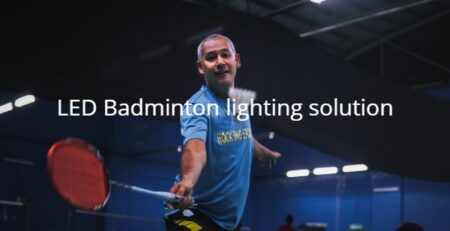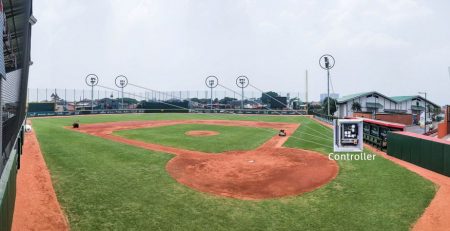LED Floodlighting Standards and Lighting Scheme for Tennis Courts
In this article, we will discuss the lighting Standards for Tennis courts and their lighting Scheme.
Tennis Court lighting standards
We have chosen the most widely used lighting standards in this part.
BS 12193 lighting Standard (The general sports lighting guidance in Europe)
BS 12193 gives us lighting standards for both indoor and outdoor projects.
1.Indoor Tennis Court Lighting Standards

2.Outdoor Tennis Court lighting Standards
Table A: Lighting Standards on Playing Area of Outdoor Tennis Courts
Table B: Maximum Obtrusive light permitted for exterior lighting installation
-
LTA lighting standards
-
ATP Standards
1. Tennis Court Size:
Courts shall not be less than 60 feet (18.29 m.) wide and 120 feet (36.58 m.) long.
Center courts should be 66 feet (20.11 m.) x 132 feet (40.23 m.).
2. Tennis Courts Quantity and lighting requirement of ATP
1) Minimum Number of Lighted Courts – Outdoor events
a) ATP Tour Masters 1000. Center Court, two (2) other show courts plus one (1)
practice court.
b) ATP Tour 500. Center Court plus one (1) another show court.
c) ATP Tour 250. No minimum requirement.
2) Intensity
a) ATP Tour Tournaments. Lighting must be evenly distributed on the court with a minimum recommended intensity of 100-foot candles (1076 LUX) and averaged over 15 readings. The recommended minimum lighting for televised events broadcasting in high definition is an average of 185-foot candles (approximately 2,000 lux).
The light should be distributed across the court evenly with a consistent colour temperature.
b) ATP Challenger Tour Tournaments. Lighting must be evenly distributed on the court with a minimum recommended intensity of 70-foot candles (750 LUX) and averaged over 15 readings.
3) High/low ratio. The highest to lowest readings ratio should be no greater than 1×2.0, but the recommended ratio is 1×1.5.
4) Light poles. Light poles should be positioned so that they are evenly distributed around the court. It is recommended that light pole heights for other than show courts be no lower than forty (40) feet (12.19 m.) or no lower than other non-show court lights at the facility, e.g., if others are sixty (60) feet (18.29 m.), then new lights should be sixty (60) feet (18.29 m.) high.
5) Ceiling Height. Indoor or covered show courts shall have a minimum top height of
forty (40) feet (12.19 m.) except as otherwise approved by ATP.
Different fields will have their own choices of lighting requirements. Sometimes, we can try to deduct glare in the HDTV broadcasting project by increasing the vertical luminance. But we have to make the ratio balanced carefully.
Light Spillage and Glare
Spillage is in two forms.
-
Horizontal illuminance
Horizontal illuminance refers to the brightness measured at ground level.
-
Vertical light trespass
Vertical light trepass impacts on the face of vertical surfaces – e.g. neighbouring windows
Glare is not simply too much light. It affects both players, spectators and the surrounding environment and is highly subjective. There are two types too.
Disability glare impairs vision without necessarily causing discomfort.
Discomfort glare causes discomfort without necessarily impairing vision. It is related to the brightness of illumination sources, the lamps, the observer’s field of view, and other factors such as the background brightness, e.g. night sky.
These factors working together give rise to the sensation of discomfort glare.
Both spillage and glare can be minimised by the correct selection, siting and aiming of the floodlighting relative to the observer’s position.
In general, the application of floodlights incorporating asymmetric reflectors or asymmetric beam angles at low aiming angles will contribute significantly to the control of light spillage and glare.
Lighting Scheme
-
Side lit scheme
Two courts controlled as one “block” and lit at the sides only.
Advantages:
1. Less glare within the court area;
2. Less glare within the intended area;
3. Good control of light spillage;
4. With Columns 8 Ms high or above- high levels of uniformity
5. Multi-court lighting in blocks of two and three is possible
Disadvantages:
1.Difficulties experienced where two or more courts are to be illuminated individually unless a minimum of 7 M is available to locate columns between courts at the baseline safely.
2. Usually, a minimum of three columns is required at each side of each court, hence as not as effective as other solutions when lighting courts individually
-
Corner lit scheme
Two courts are lit and controlled individually from the corners of each court.
Advantages:
1. Least number of columns to achieve LTA recommended Standards
1.Potential for excessive glare. Careful selection of aiming angles selected
2.Column height might be considered
3.Obtrusive in daylight
4.Column locations always required outside the fenced area.
Column and side-lit scheme
Corner and side-lit lighting shemes are always with 6 Ms posts
Advantages:
1. uses lowest column heights based on LTA recommended standard
2. Facilitates the application of ‘box type’ fittings– perceived by most planning authorities as more suitable for contentious site locations.
3. More suitable for two or more courts, where the limited room is available between courts
4. Good control of glare, sky glow and spillage
Disadvantages:
1. Large number of columns required to achieve minimum standards
2. A larger number of fittings than the equivalent corner lit scheme
3. More costly to install
For more simulation report, please drop a messege to sales@enkarl.com








